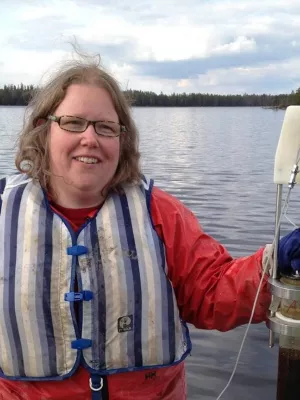
Anne Nielsen
Projektkoordinator

Quantitative landscape dynamics in Denmark through the last three millennia based on the landscape reconstruction algorithm approach
Författare
Summary, in English
This paper explores the spatial and temporal land-cover variability within the main cultural landscape units in Denmark during the last 3,000 years. Quantitative estimates of the cover of trees, grasses, Cerealia and Calluna around nine Danish lakes were obtained using the recently developed Landscape Reconstruction Algorithm (LRA) (Sugita 2007a, b). The performance of the approach was evaluated by comparing reconstructed vegetation based on a.d. 1800 pollen spectra to land cover from historical maps of the same period. Although the model tended to overestimate grassland cover by 10–20%, the reconstructed vegetation was much more similar to the observed than the uncorrected pollen proportions. The LRA was then applied to 3,000 year long pollen records to reconstruct the vegetation development around each of the nine sites. The results support earlier conclusions regarding the relative stability of woodland, agrarian and heathland dominated landscapes in Denmark (Odgaard and Rasmussen 2000), with the distribution of the main landscape types determined by topography and soil characteristics. The present study indicates that the transition zones between agricultural and forest dominated landscapes were the most dynamic, acting as buffer zones where most of the expansions and contractions of agricultural activities took place. The quantitative vegetation reconstructions underline the importance of farming and especially pastoral activities in shaping the Danish landscapes throughout the study period.
Publiceringsår
2010
Språk
Engelska
Sidor
375-387
Publikation/Tidskrift/Serie
Vegetation History and Archaeobotany
Volym
19
Issue
4
Fulltext
- Available as PDF - 908 kB
- Download statistics
Länkar
Dokumenttyp
Artikel i tidskrift
Förlag
Springer
Ämne
- Geology
Nyckelord
- Landscape reconstruction algorithm
- late Holocene
- quantitative analysis
- pollen analysis
- lake sediments
Status
Published
ISBN/ISSN/Övrigt
- ISSN: 0939-6314

